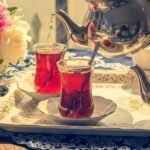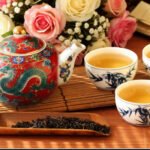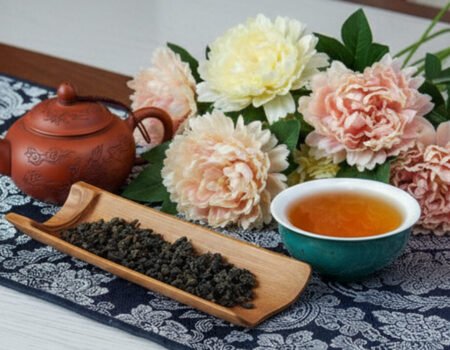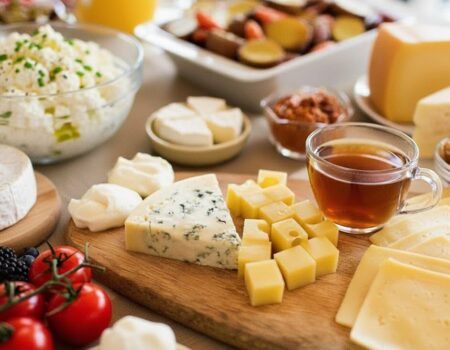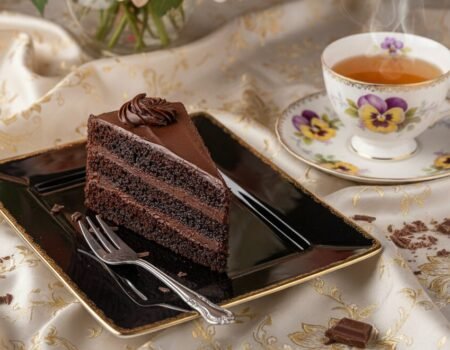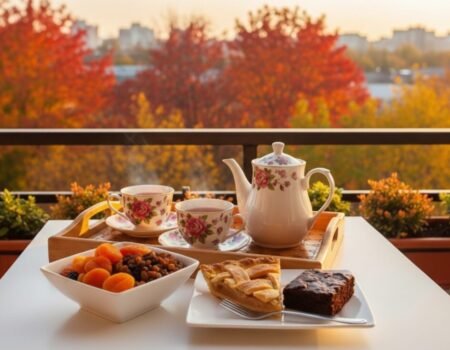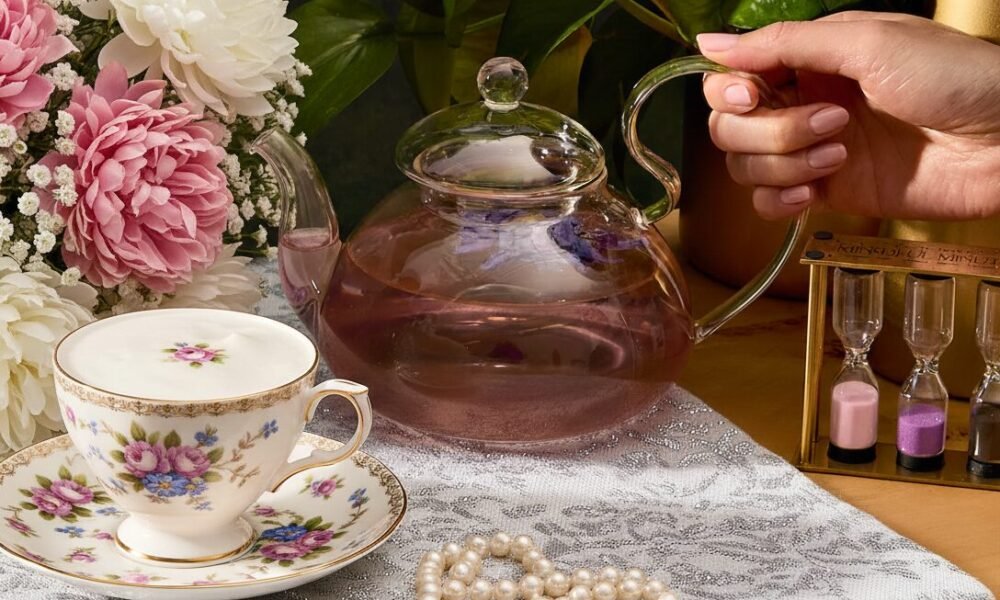
Perfecting Your Tea Steeping Time: A Comprehensive Guide
Index
Getting your tea steeping time wrong can ruin a perfect cup of tea. Most tea drinkers steep their tea for too long or too short, missing out on the best flavors. Tea steeping time varies widely, from one minute for delicate green teas to over five minutes for robust black teas.
This guide will show you the exact times and techniques for brewing every type of tea.
Key Takeaways
- Different tea types need specific steep times: black tea (3-5 minutes), green tea (1-2 minutes), white tea (2-3 minutes), oolong tea (depending on oxidation: light 1–2 minutes, medium 2–3 minutes, and dark 3–5 minutes), and herbal tea (5-7 minutes).
- Water temperature matters as much as timing. Use 200-212°F (93-100°C) for black tea, 160-180°F (70-82°C) for green tea, 160-185°F (71-85°C) for white tea, 185-205°F (85-96°C) for oolong tea, and 200-212°F (93-100°C) for herbal teas.
- Over-steeping causes bitterness, especially in delicate teas. Under-steeping results in weak, flavorless brews. A timer helps achieve consistency.
- The ideal tea-to-water ratio is usually 2 grams of loose leaf tea per 250 mL of water (~8 ounces). This creates optimal strength without bitterness.
- Quality tea leaves can be re-steeped multiple times. Each new infusion reveals different flavor notes. Add 30 seconds to steep time for each additional brew.
Importance of Steeping Time in Tea Brewing
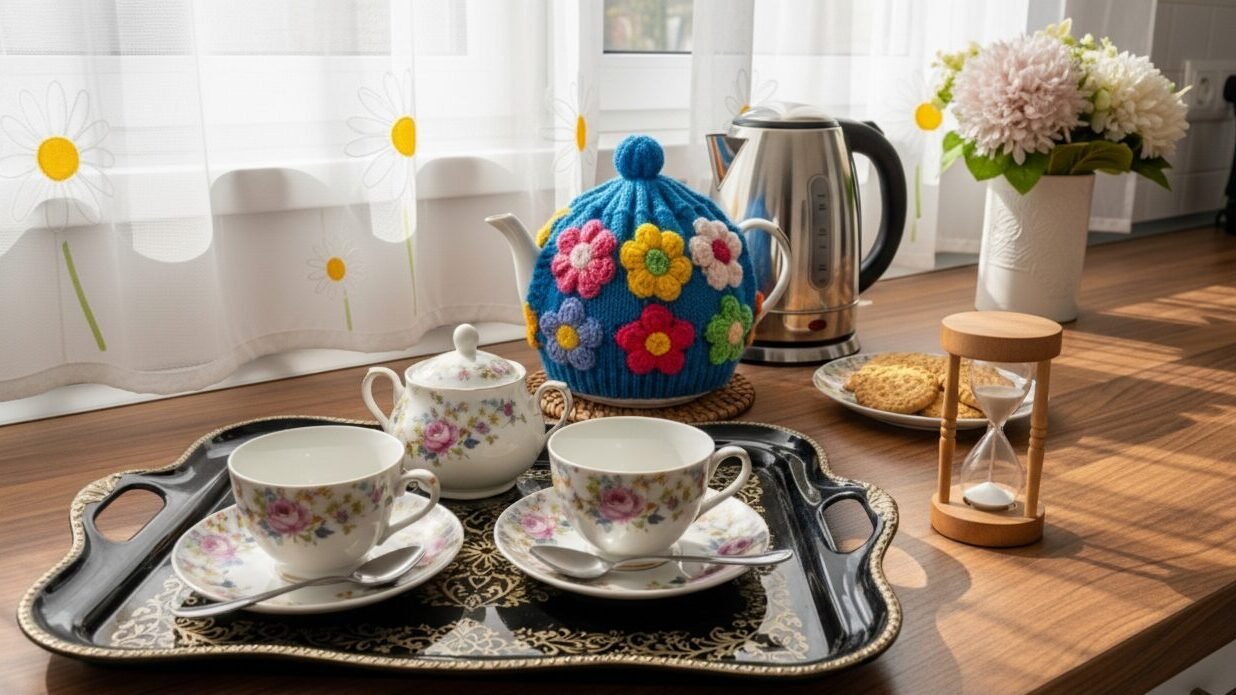
Steeping time serves as the key factor between a perfect cup and a bitter disappointment. Proper timing extracts the right balance of flavor compounds, caffeine, and antioxidants from your leaves, while mistakes can ruin even the highest quality tea.
Why steeping time matters
Steeping time serves as the key factor in extracting the perfect flavor from your tea leaves. Tea contains various compounds that release at different rates – tannins, caffeine, and essential oils all emerge during the steeping process.
The right timing balances these elements to create a harmonious taste profile in your cup. Too short a steep results in weak, flavorless tea that fails to showcase the leaf’s true character.
Getting your timing right transforms an ordinary drink into an extraordinary experience. Most tea enthusiasts agree that precise steeping prevents bitterness while maximizing aroma and taste.
Each tea type requires specific timing – delicate white teas need gentle extraction while robust black teas can withstand longer steeps. Your tea timer becomes a crucial tool in this process, helping you achieve consistency with every brew.
Mastering this aspect of tea preparation will significantly improve your daily tea ritual.
Effects of over-steeping and under-steeping
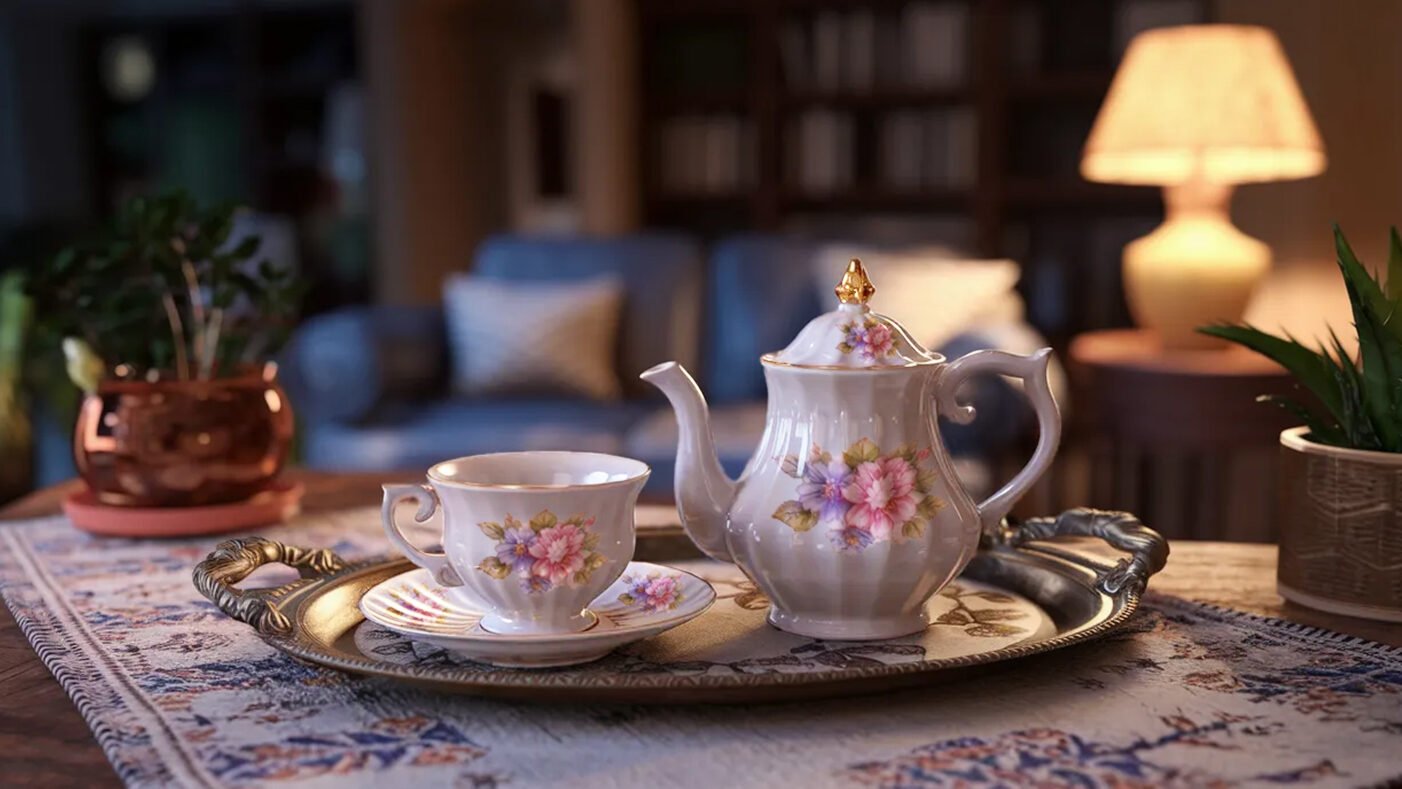
Over-steeping your tea creates unwanted bitterness, especially in delicate teas like green and white varieties. Black tea becomes noticeably more bitter after the 5-minute mark, though it does release extra caffeine for those seeking an energy boost.
Green tea turns particularly harsh if left too long, with its pleasant grassy notes transforming into an unpleasant flavor after just 2 minutes. Under-steeping produces the opposite problem – a weak, bland cup lacking character and depth.
The tea fails to release its full range of flavors, leaving you with a disappointing brew that misses the mark on both taste and aroma. The perfect steep time balances these extremes to extract maximum flavor without bitterness.
Each tea type requires specific timing to achieve its best flavor profile, making proper steeping essential to your tea experience. Let’s explore the recommended steeping times for different tea varieties to help you brew the perfect cup every time.
Recommended Steeping Times for Different Tea Types
Different tea types need specific steeping times to reach their full flavor potential. Each variety – from delicate white teas to robust black teas – has its own ideal brewing duration based on leaf size and processing method.
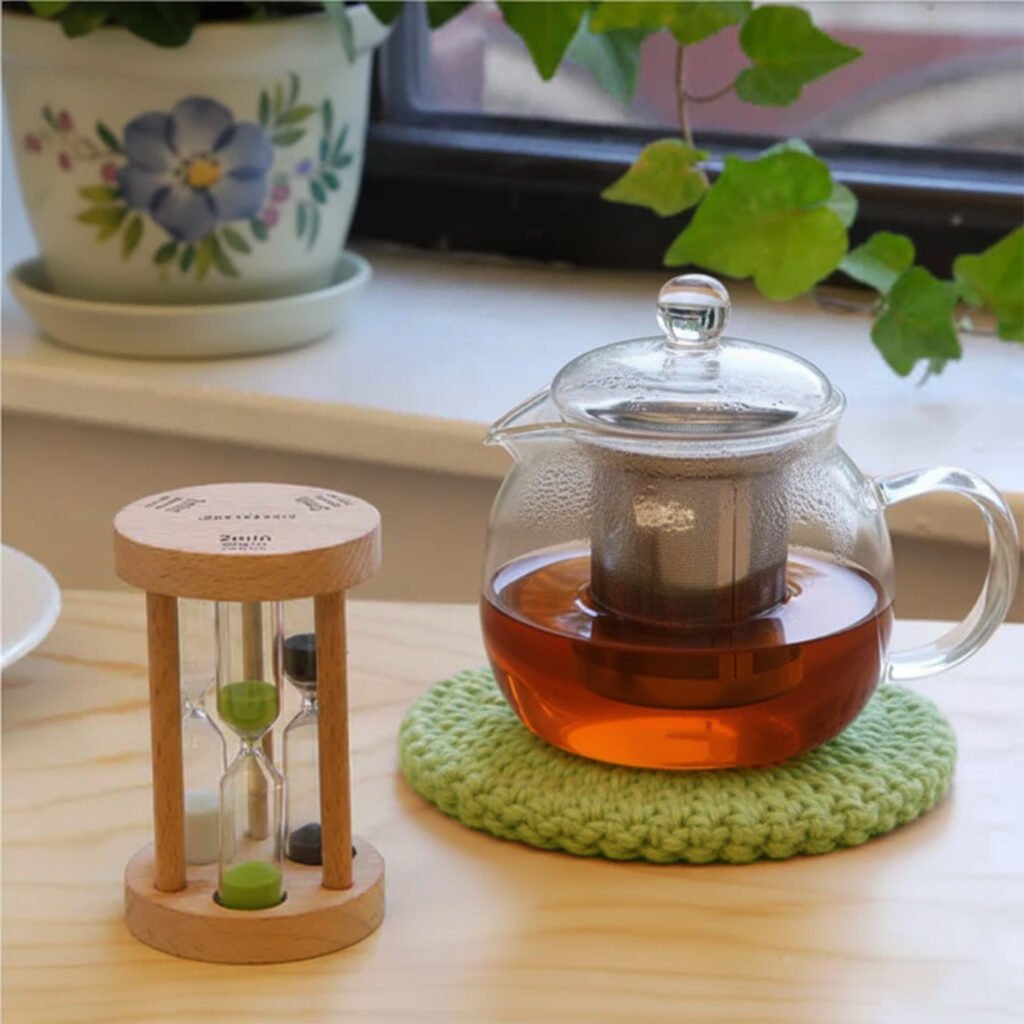
Black tea
Black tea requires precise timing for the perfect cup. This popular tea needs 3 to 5 minutes in near boiling water (205°F/ 96°C) to release its full flavor profile. Many tea lovers enjoy English Breakfast, which steeps best for 3 to 4 minutes.
Timing matters greatly with black tea because mistakes affect your drinking experience. Too long in hot water creates bitter flavors that overpower the natural taste. Too short leaves you with weak tea lacking character.
A timer helps track these crucial minutes, ensuring your loose leaf or bagged tea delivers the right balance of strength and smoothness each time.
Green tea
While black tea needs longer brewing, green tea demands a gentler touch. Green tea leaves release their delicate flavors best with shorter steep times of just 1 to 2 minutes. This brief window captures the fresh, grassy notes without pulling out harsh tannins that create bitterness.
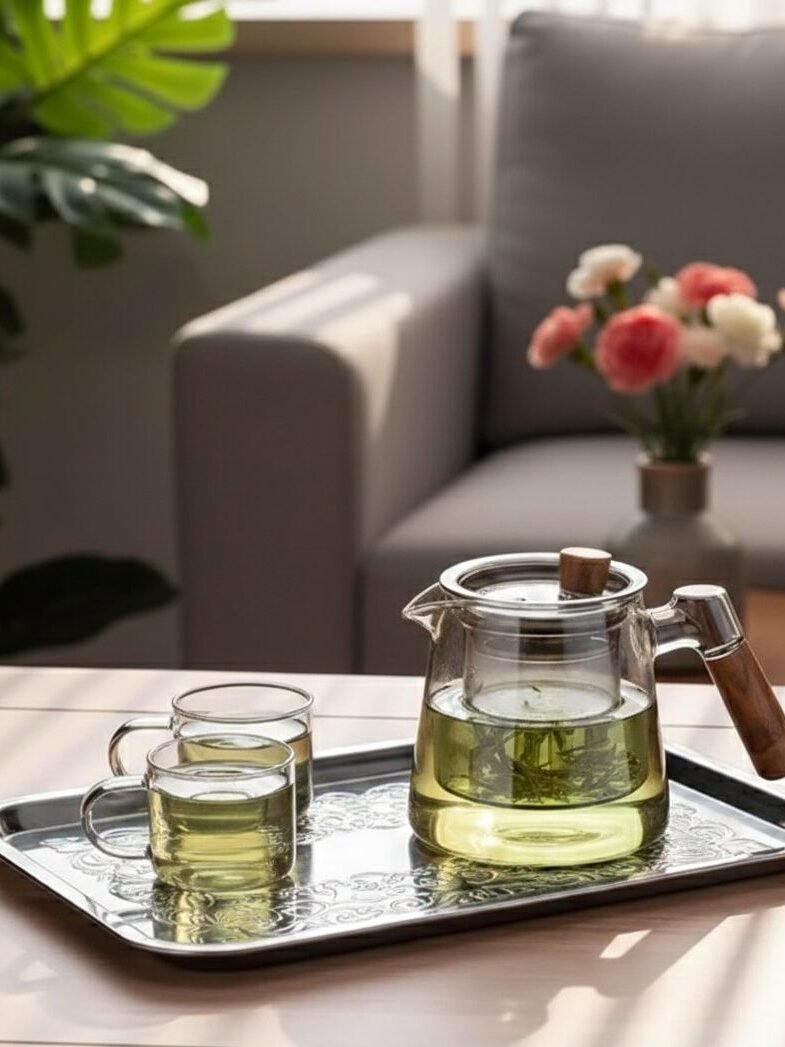
Water temperature plays a crucial role in green tea preparation. Too hot water (above 180°F) will scorch the leaves and ruin your brew. The ideal range sits between 160°F to 180°F, allowing the leaves to unfurl slowly and release their subtle flavors.
Your personal taste matters too—some tea drinkers prefer a stronger cup and might extend steeping time slightly, while others enjoy the lighter notes from a quick infusion. A tea timer helps maintain consistency in your brewing routine.
White tea
White tea offers a gentle introduction to the tea world with its subtle flavors. This delicate variety requires precise steeping times of 2 to 3 minutes to reach its full potential.
The ideal water temperature ranges between 160°F and 185°F – too hot and you’ll scorch the leaves, too cool and you’ll miss out on flavor. Some premium white teas resist bitterness even with longer steeps, making them perfect for tea beginners.
Most tea lovers appreciate that white tea leaves can be used multiple times, with each steep revealing new taste notes.
For the best results with loose leaf white tea, try using a glass teapot or tea infuser that allows the leaves to expand fully. The next section explores oolong tea, which offers a fascinating middle ground between green and black varieties.
Oolong tea
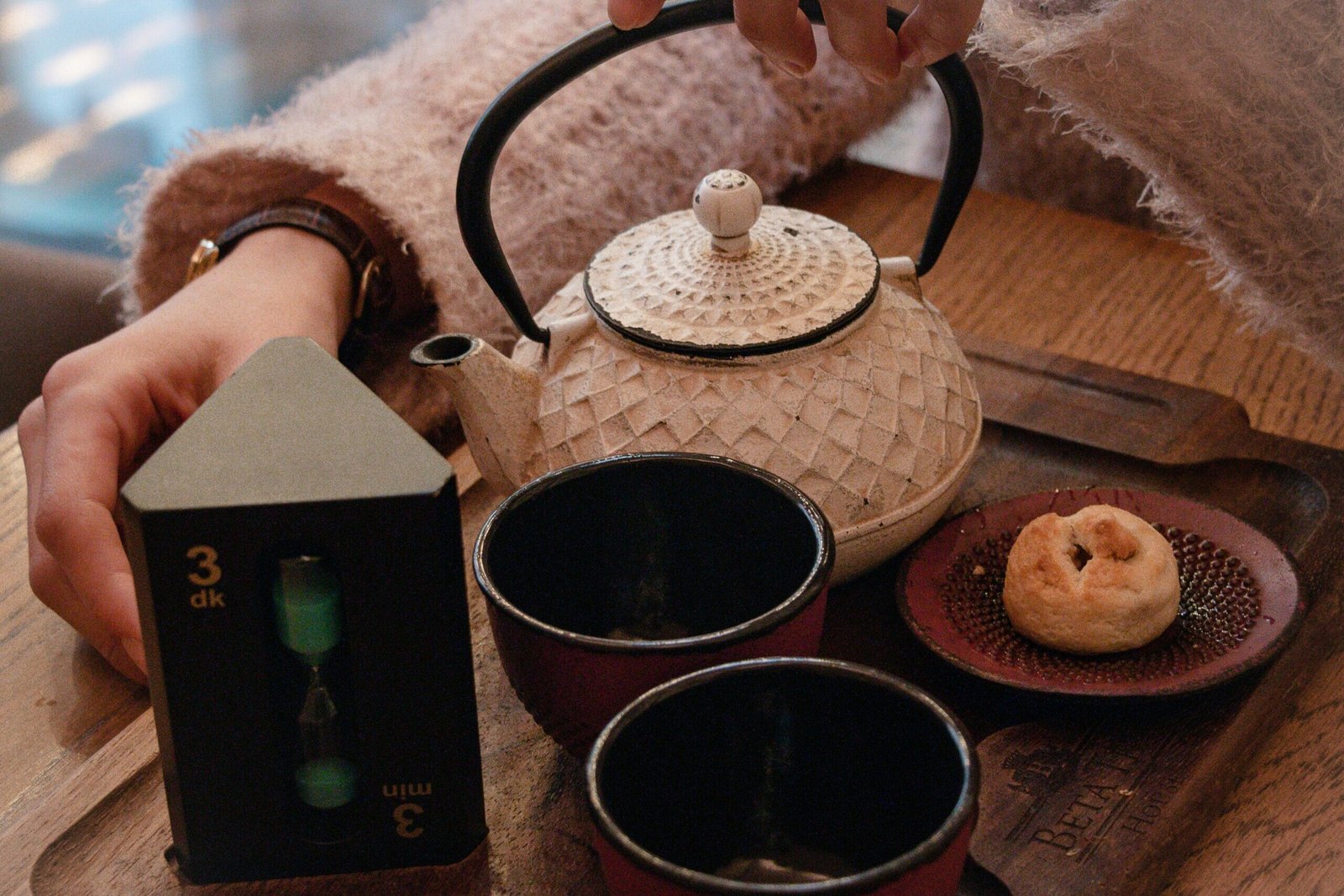
Oolong tea sits between black and green tea in the tea spectrum, offering a rich flavor profile that changes with steeping time. This partially oxidized tea reaches its flavor peak when steeped for 2 to 3 minutes in water heated to 185-205°F (85-96°C).
Many tea fans miss out on oolong’s full potential by using incorrect timing or temperature. The leaves hold multiple flavor layers that reveal themselves through proper brewing methods.
Tea masters prize oolong for its ability to be infused several times, with each steep bringing out new taste notes. The first infusion might highlight floral notes, while later steeps can reveal deeper, more complex flavors.
Longer steeping times produce stronger tastes but risk adding bitterness to your cup. Your tea kettle and timer become essential tools for capturing this tea’s perfect balance. Next, let’s explore how different brewing ratios affect your tea experience.
Herbal tea
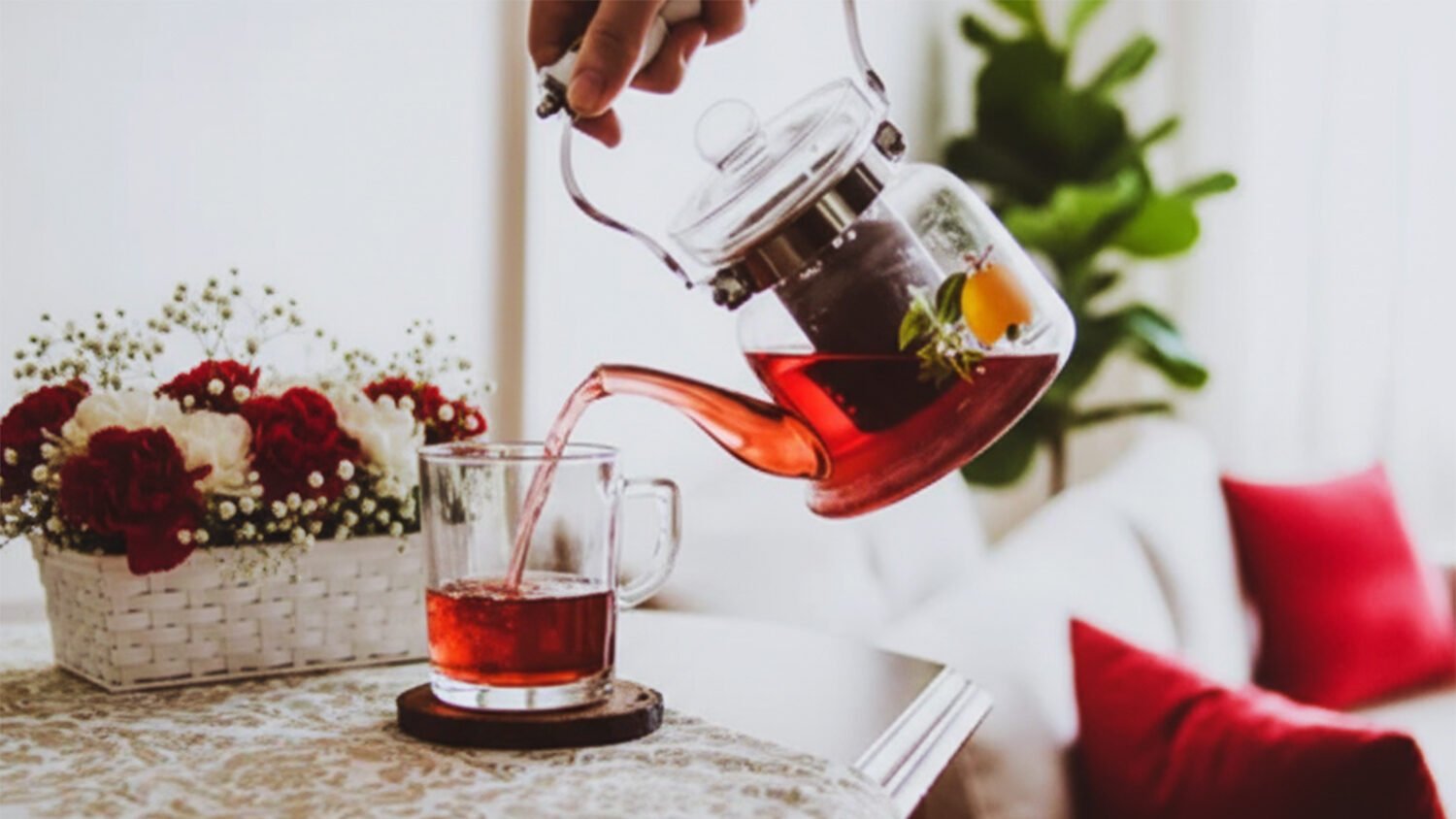
Herbal teas need more time to release their full flavor profile compared to traditional teas. Most herbal infusions require 5-7 minutes of steeping at temperatures between 200°F to 212°F for optimal taste.
Chamomile, hibiscus, and rooibos all fall into this category, though each brings its unique character to your cup. The brewing ratio matters too -use about 2 grams of loose herbal leaves per 8 ounces (250 mL) of water to achieve the perfect strength.
Fresh, filtered water makes a huge difference in your herbal tea experience. Unlike black or green teas, many herbal varieties won’t become bitter with extended steeping times. This flexibility allows you to adjust the brew strength based on your taste preferences.
Some herb blends actually benefit from longer infusion periods, developing richer flavors as they steep. Many tea lovers find that herbal teas make excellent cold brews too, creating a flavorful drink without any hint of bitterness.
Techniques for Perfect Timing
Timing your tea steep makes all the difference between a perfect cup and a bitter disappointment. A good timer keeps you on track, while taste testing helps you fine-tune your brew to match your exact flavor preferences.
Using a tea timer
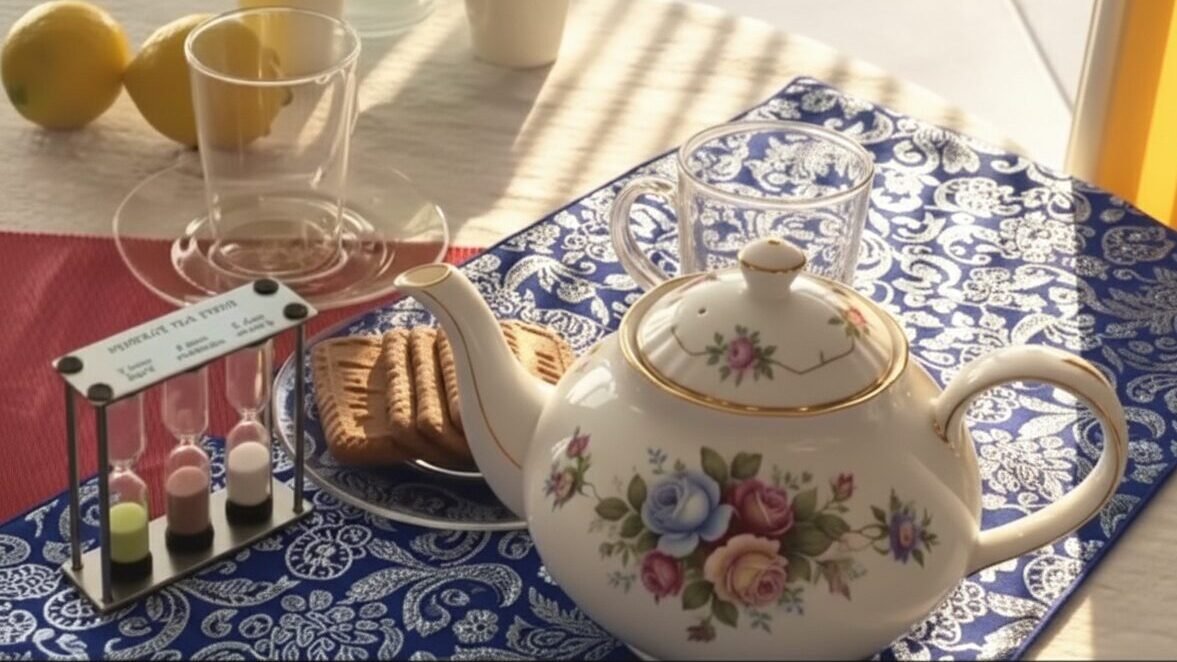
A tea timer takes the guesswork out of brewing the perfect cup. This simple tool helps you track exact steeping times for each tea variety, ensuring you never face the disappointment of bitter over-steeped tea again.
Most tea experts agree that timing precision makes the difference between a mediocre cup and an exceptional one. Your timer creates consistency in your daily tea ritual, allowing you to replicate that perfect cup every single morning.
Tea timers come in many forms – from basic kitchen timers to specialized apps on your phone. The benefit extends beyond just taste control. Proper timing also helps you manage caffeine levels in your brew.
Black teas need about 3-5 minutes, while delicate green teas require just 1-2 minutes for optimal flavor. Setting your timer prevents you from walking away and forgetting your brewing tea, which often leads to that unwanted bitter taste that ruins the entire experience.
Taste testing for precision
Taste testing offers the most direct path to tea perfection. You’ll notice dramatic flavor changes with just 30-second adjustments in steep time. Start by brewing your chosen tea at the standard time, then sample it.
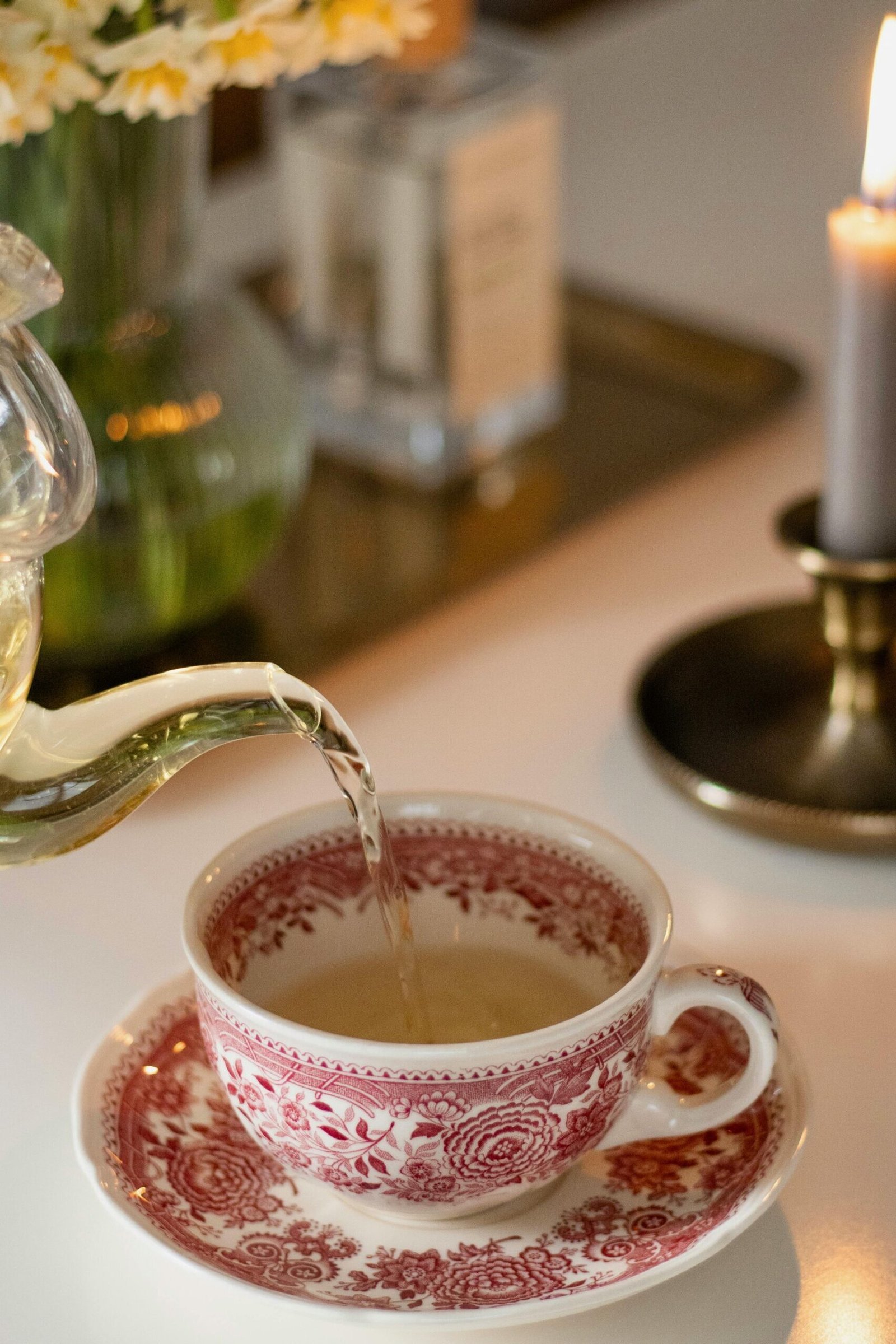
Does your green tea taste grassy or bitter? Try reducing the steep time by 30 seconds. Is your black tea weak? Add another minute. Your taste buds serve as reliable guides to find your ideal brew strength.
Recording your results creates a personal tea brewing chart. Note the tea type, water temperature, leaf amount, and steep time alongside your taste impressions. Many tea enthusiasts keep small notebooks dedicated to this practice.
This systematic approach transforms casual drinking into precise brewing, ensuring each cup of loose leaf tea delivers consistent flavor that matches your preferences perfectly.
Understanding Tea Brewing Ratio
The perfect cup of tea depends largely on the right tea-to-water ratio. For optimal flavor, use 2 grams of loose leaf tea per 250 mL of water. This balance creates the ideal strength without bitterness or weakness.
Tea enthusiasts often adjust this ratio based on personal taste preferences and the specific tea variety being brewed.
Brewing vessel size plays a crucial role in your tea’s final taste. A smaller teapot increases the tea-to-water ratio, producing a more concentrated flavor. Quality water matters too – filtered or spring water brings out the best notes in your tea leaves.
Many tea lovers find that measuring their ingredients with a small scale leads to more consistent results than eyeballing amounts.
Additional Tips for the Perfect Brew
The perfect brew goes beyond timing—water temperature plays a crucial role in bringing out the best flavors from each tea type. Mastering both temperature control and steep time will transform your daily cup from ordinary to extraordinary.
Ideal water temperatures for each tea type
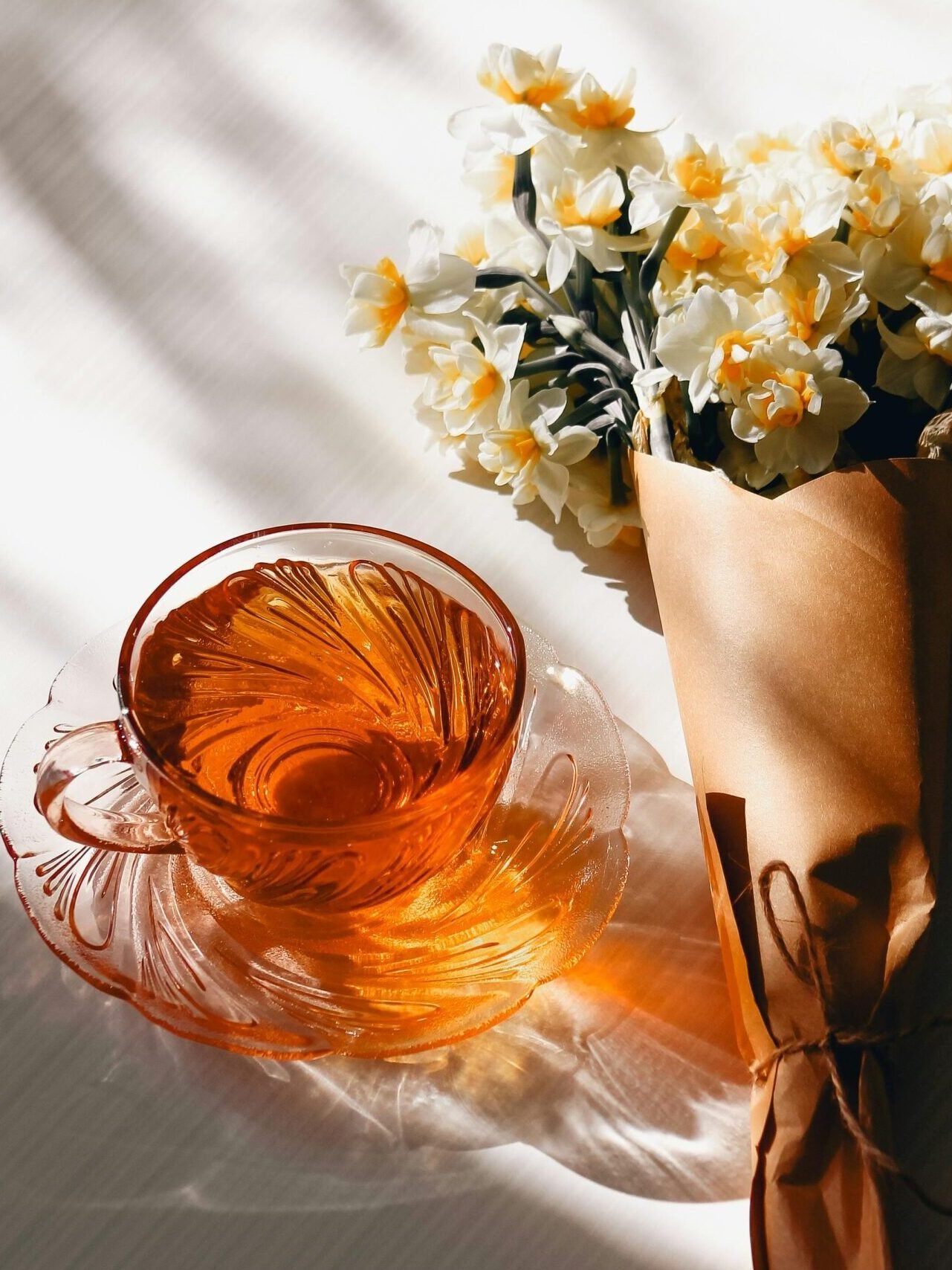
Water temperature plays a crucial role in extracting the perfect flavors from your tea leaves. Different tea varieties need specific heat levels to release their unique taste profiles without becoming bitter or bland.
True Teas (From Camellia sinensis)
Hot Water Teas (195-212°F / 90-100°C)
- Black Tea: 200-212°F (93-100°C) – The robust leaves need this high heat to release their full-bodied character and caffeine content
- Pu-erh Tea: 195-212°F (90-100°C) – These aged Chinese leaves develop their distinctive earthy depth at higher temperatures
Medium Temperature Teas (185-205°F / 85-96°C)
- Oolong Tea: 185-205°F (85-96°C) – This semi-oxidized tea balances floral and fruity notes that emerge perfectly in this range
Gentle Temperature Teas (140-185°F / 60-85°C)
- Green Tea: 160-180°F (71-82°C) – Lower temperatures preserve the sweet, grassy flavors without creating bitterness
- White Tea: 160-185°F (71-85°C) – These minimally processed leaves release their subtle sweetness at moderate heat
- Japanese Gyokuro: 140-150°F (60-66°C) – This premium green tea’s umami sweetness shines at cooler temperatures
Herbal & Alternative Teas
High Temperature Infusions (194-212°F / 90-100°C)
- Herbal Teas: 200°F (93°C) – Dried fruits, flowers, and spices release their full flavor spectrum at this temperature
- Rooibos: 194-212°F (90-100°C) – South African red bush tea’s woody notes develop fully with hot water
Re-steeping leaves for multiple infusions
Beyond getting the right water temperature, you can stretch your tea enjoyment through multiple infusions. Quality whole tea leaves offer more than one flavorful cup from a single scoop.
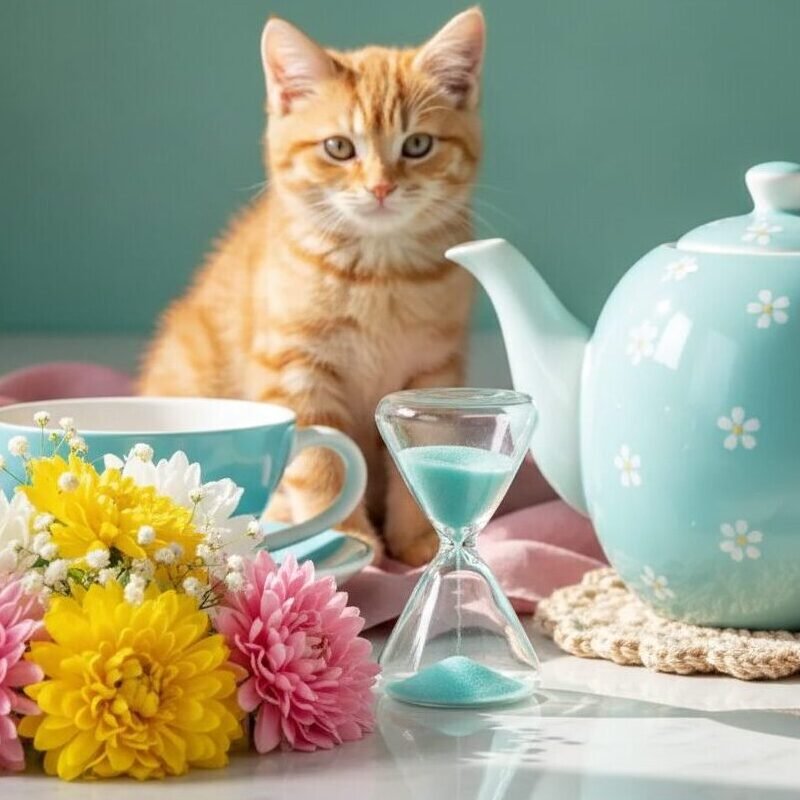
Pure teas from the Camellia sinensis plant work best for this method, while herbal blends might lose their punch after the first steep.
High-grade leaves maintain their complex flavors across several brews. This practice gives you better control over taste profiles and lets you notice subtle changes between each cup.
Many tea fans find the second or third steep reveals new flavor notes that weren’t present in the first cup. Try extending steep time by 30 seconds with each new infusion to extract the remaining flavors from your tea leaves.
Conclusion
Mastering tea steep times transforms an average cup into a perfect brew. Each tea type demands specific timing, from the quick one-minute steep of delicate green teas to the longer five-minute immersion for robust black varieties.
Your timer becomes as vital as your teapot in this process. Start with standard recommendations, then adjust based on your taste preferences. The path to tea excellence lies in this balance of science and art—where precise timing meets personal enjoyment.
Your patience will reward you with the fullest expression of your tea’s character.
FAQs
1. How long do you steep different types of tea?
Black tea steep time is about 3-5 minutes. White tea needs two to three minutes, while most green teas need just one to two minutes. Pu’er tea and other robust varieties can steep longer, while delicate teas like Darjeeling should steep for less time.
2. What happens if tea is steeped for too long?
Your tea might become bitter and astringent. When teas are steeped beyond their recommended steep times, they release too many tannins, creating a bitter cup that masks the natural flavors.
3. Should I use a timer when steeping tea?
Yes. A clock or timer helps you track how long to steep tea consistently. This simple tool prevents over-steeping and ensures you get the perfect cup every time.
4. Does water temperature matter for steeping tea?
Absolutely! Using water that’s too hot can damage delicate tea leaves. Black and herbal teas can handle boiling water, but green and white teas need cooler temperatures, typically 160-180°F for green tea and 160-185°F for white tea.
5. Can I reuse tea leaves for multiple infusions?
Many quality loose tea leaves can be infused multiple times. Gongfu tea preparation specifically calls for short steeps with multiple infusions. Just add 30 seconds to each subsequent steep time.
6. What’s the best way to remove the tea after steeping?
Use a tea filter or infuser that allows easy removal once your steep time is complete. For tea bags, simply lift them out. Complete removal stops the steeping process and prevents bitter flavors from developing.
References
- https://artfultea.com/blogs/101/loose-leaf-tea-steep-time?srsltid=AfmBOorKoys1yCgdycmkh1RMCgli0MQbDby7rFL5-HhFQ2qa_oxtzRcS
- https://thedynastyoftea.com/allblogs/how-long-to-steep-tea
- https://artfultea.com/blogs/101/loose-leaf-tea-steep-time?srsltid=AfmBOooW3wYxxVIfFhr3Wd-8DQuk1XBJSPZnYNWozvAs2M9Hy-IfkB07
- https://artfultea.com/blogs/101/loose-leaf-tea-steep-time?srsltid=AfmBOorkhmetxSad4peAD5CLk46OKu-xzgyajQOxyrv_om_EeYB6GuBi
- https://www.republicoftea.com/blog/tea-library/how-long-do-i-steep-green-tea/tl-037/?srsltid=AfmBOopFqaibFxWPJ5A-76qI7akdq7Lv117OwBuZCaxdMPQEpQi8jETG
- https://fullleafteacompany.com/blogs/research/how-long-do-i-steep-white-tea?srsltid=AfmBOorrGC99xFW_QkIB2ItCLY1SaCcN0e9_eewCTRVC9JLPbEO_eh1W
- https://artfultea.com/blogs/101/loose-leaf-tea-steep-time?srsltid=AfmBOoqyvXQ-mCdX9DiHFCDjmPm4O4pl6GaJyScpC2leFuvWlQkpUajU
- https://www.redrockteahouse.com/blogs/articles/the-ultimate-guide-to-brewing-oolong-tea?srsltid=AfmBOop57d0pLsmCKZ6fIjwpXR2y-InUeOhKU5gQWj7F7ZjQO2FWk_4Z (2025-03-14)
- https://cafe-brew.com/the-art-of-steeping-tea-a-comprehensive-guide/?srsltid=AfmBOoqtN_GUxCEJPVAlClDh1jjD_ruLtnJjApZ1W4SUznsLq8RrP2Qe
- https://artfultea.com/blogs/101/loose-leaf-tea-steep-time?srsltid=AfmBOoq75cL3-s7e0o1TfgUa1_ISVSwHWN0J7Xsh8xqjNUb6yuOMyMir
- https://cafe-brew.com/the-art-of-steeping-tea-a-comprehensive-guide/?srsltid=AfmBOoqm4lRMD955-tMeVmiGprCXO9hJelDKPcdvUbt4VEAxnhwlUWzK
- https://cafe-brew.com/the-art-of-steeping-tea-a-comprehensive-guide/?srsltid=AfmBOor5RRmur14Xb0oLDOcXCgDnOw6FK5YcOv8FyQt-5l81AMlNpPfU
- https://rishi-tea.com/blogs/journal/why-water-temperature-is-important-when-brewing-tea?srsltid=AfmBOoqpqKCd28er9vpTAR5Q6SxT25EAyNoV3Zr-luKfcx5wp35y6Dk-
- https://jyyna.co.uk/how-make-tea/
- https://redblossomtea.com/blogs/red-blossom-blog/8-tips-for-brewing-multiple-infusions?srsltid=AfmBOoobESDOW1iqOw61eC9DqG_evym8YXk83z1GqbwSN29c0ExrQQym

